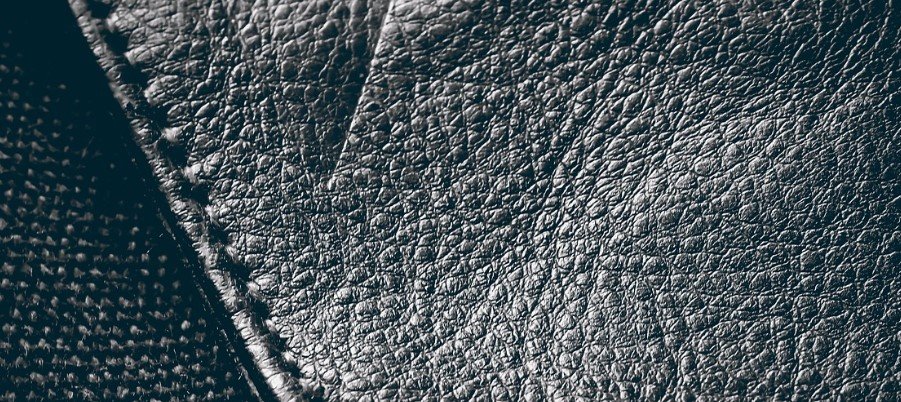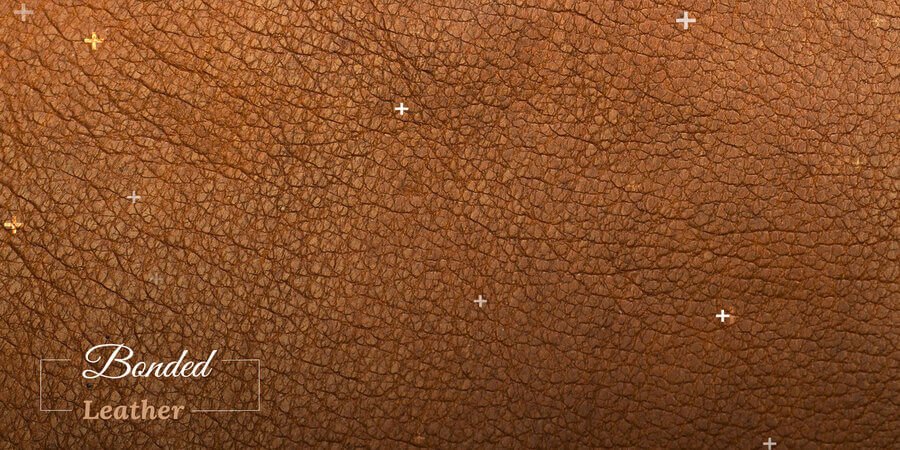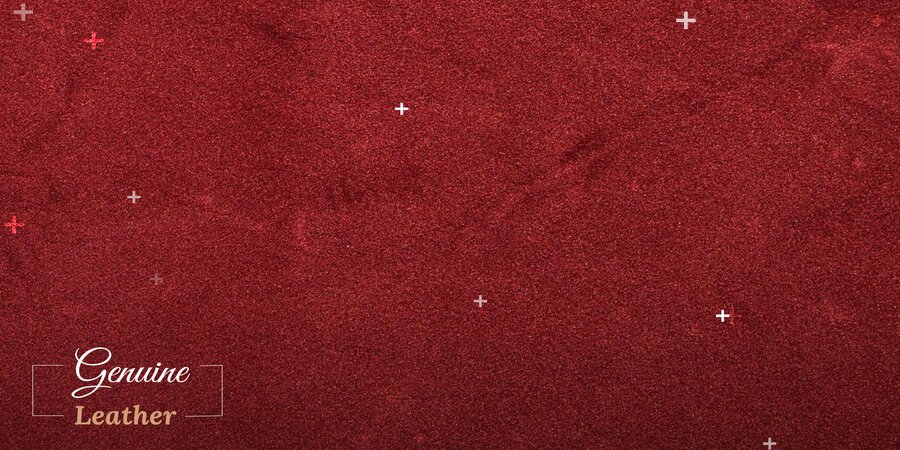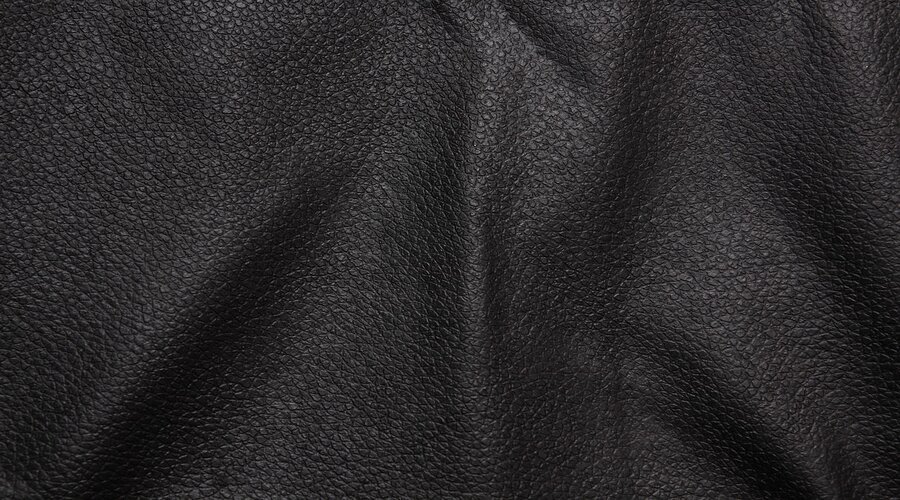The Best Guide on Bonded Leather
The wide variety in the classification of leather can easily put one’s mind to unrest. Bonded leather is one of the vital segments of this story.
People purchase clothing, footwear, book cover, cases and cover for electronics, furniture and all kinds of products, made of it. So it enjoys substantial popularity in the real world despite its fundamental low quality.
Essentially it costs less and looks almost the same as top grade genuine leather. Therefore shoppers are not shy of going for it. Now let’s dive deep into the definition and other relevant aspects of it.
What is Bonded Leather:
In short, scraps and remnants of leather are blended into a pulp. This is then pasted on a backer, usually a fiber cloth or a paper backing.
They coat the whole thing with polyurethane and emboss it with a leather-like texture or grain to give it a genuine-leather appearance.
The pulp makes up for about 10-20% of the final product and in turn, it is called blended leather.
None can say bonded leather is completely artificial as it contains some elements of leather. But those components are in fact scraps and it simply indicates their belonging to the inferior quality.
A hide is cut into many portions to fit specific product designs in mind. After they cut off portions of hide for the best full grain goods, there arise some leftovers in bits and pieces.
Moreover, the natural sizes of all hides never match. This factor again contributes to some additional wastes. These unused pieces and small cutoffs of the hide are carefully collected and then sent to a specialized factory. They grind those scraps to a specific type of mulch. When these little pieces are glued back together using polyurethane, the final outcome of this process is bonded leather.
In terms of quality, it closely resembles its low end bi-cast counterpart. In no way, one can write off bonded leather as rubbish because of its credible smell as well as appearance.
As a result, manufacturers once in a while put genuine leather labels on it. An average person has no capability in determining its true state. The distinction goes too subtle for most of us to handle. We need to keep digging in order to resolve this issue as we at least know bonded leather is not on par with real leather.
What are some other names of Bonded leather?
Bonded leather goes with several other legal as well as popular names.
- Genuine leather
- Real leather
- LeatherSoft
- Reconstituted leather
- Blended leather
- Vero cuoio
- Composite leather
How to identify bonded leather?

You, as a buyer, are in a real dilemma while buying leather goods because of its variation in quality, materials and composition. Well, Leatherfact set a guideline to identify bonded leather at ease. Let’s check out the methods.
Legal guidance:
You already know that bonded leather makes up for about 10-20% of the materials. The Federal Trade Commission (FTC), in the USA, has outlined a Leather Guide that guides the overall marketing strategy of bonded leather products. Normally, the manufacturer or marketer should adequately obviate the percentage of leather and non leather materials in the product, much clear for the consumer to see it and understand.
Label marker:
Apart from artificial leather, manufacturers use ‘genuine leather’ labels on all merchandise regardless of its percentage. Now, you can simply take a look at the label and decide for yourself whether it is real leather or not. None can deceive you into believing it to be durable and attractive top grain.
Price range:
Another signifier is the price range as reconstituted leather never dents your wallet. For most of the families, genuine leather product expenses starve out the other near future essentials. Full grain leather goods trail just the house and the car right from the behind in terms of cost.
Thickness:
You can tell the difference by sensing its thickness as well. Bonded leather goes thinner than their real counterparts.
Artificiality:
Bonded leather also feels kind of synthetic in nature and you can obviously sense it from the smooth surface with consistent texture all along. It feels thin and lacks softness. This duplicity takes it closer to low cost faux leather.
Coarse look & touch:
Real leather is never smooth in either look or to the touch as it contains imperfections and blemishes, apart from its irregular surface. If you graze your fingers across the surface, genuine leather does not feel easy and even. The surface stretches and wrinkles in case of pressing fingers on it.
Smell:
The distinct leathery smell is all but absent in bonded leather and you can say it from a mile away. It brings you none of the natural, organic skin scent as the smell is beyond artificial production.
Is bonded leather durable?
Normally, we may expect 2-3 years of non problematic use of bonded leather before it starts peeling, flaking and cracking. In comparison to genuine leather, this lifespan is frustratingly short.
However, we should compare its durability against the price and then we might say that it is rather satisfactory.
Remember you have not spent a fortune for it. So the loss is not particularly a regrettable one after a few years. Bonded leather is not a solid structure and is an endless mesh of scraps from leather, polyurethane, paper or cloth and so on.
Bodily oils, dirt and other external elements can exert adverse effects on its longevity. The strong initial formation or bondage of those materials fall apart within a few years. The plastic deteriorates, the surface starts wearing and cracks appear all over the place.
With a proper care, top quality real leather can last even several decades.
Water resistant:
Contrarily, bonded leather is extremely tolerant to moisture and spills like none of its counterparts. Daily use and abrasions can have little impact upon its durability as well. However once cracks get hold of it, the end is very near with abrupt collapses.
Peeling and flaking:
Lack of natural leather features result in inflexibility. Therefore, peeling and flaking are true worries for bonded leather furniture and products.
Over time, the materials come off of paper backing and the whole thing gets disjointed. Moreover, pet and children’s frequency can have a toll on its life too.
What is the use of bonded leather?
Bonded leather serves all kinds of purposes. We have listed them down.
Furniture upholstery:
Sofas, sectionals, chairs, stools, couches, headboards, ottomans, lounge chairs, and so on. Clothing & footwear: Surfaces and lining of clothes, jackets, pants, skirts, and hats. Shoes, boots, sandals, etc.
Bag:
Briefcases, bags, some handbags, backpacks, protective cases, makeup bags, electronic device protectors, and portfolios.
Miscellaneou:
Book cover, bookbinding, belt, wallet, strap, keychain, eyeglass case, sunglass case, jewelry box, key case, credit card case, etc.
What are the advantages of bonded leather?
We cannot write off bonded leather altogether because of its fundamental low quality. Look, everyone is not looking for class and longevity all the time. They have different reasons for buying a product. We can effectively trace out several advantages of the best leathersoft goods. Let’s discuss them here.
Cheap:
Comparatively low priced bonded leather merchandise is a sound option for many as less expenses are always welcome in most of the families.
Ultimately stylish:
It offers an unimaginably wide array of colors and styles which are most of the time absent in case of genuine leather products.
Great appearance:
It introduces superb smoothness, highly consistent texture and is devoid of imperfections that many people actually prefer.
Real leather smell:
Well, bonded leather gets you genuine smell of leather unlike fake leather.
Animal friendly:
Animal lovers may find it to be a lesser evil choice as bonded leather is not the reason why the animal was killed in the first place.
What are the disadvantages of bonded leather?
We cannot ignore the downsides of bonded leather as well. Let’s focus on them now.
Inflexible:
Rigid build up of bonded leather product is responsible for causing some unease during use.
Short lifespan:
It lasts little over a few years unless you are not extremely careful about its care and maintenance. Scratches, peels and flakes literally ruin its durability.
Beyond repair:
Once it starts going down the drain, you cannot stop it from deteriorating even with utmost efforts. Fixing tears and scratches is almost impossible.
Fading:
The color degenerates pretty quickly if exposed to the sunlight.
Difficult cleaning:
Tough luck with the cleaning solutions as they also contain chemicals with abrasive properties that adversely affect the longevity of bonded leather.
Not eco-friendly:
They apply chemicals to bind the whole thing together and over time, the chemical loosens. Throwing it away into the garbage will impact the environment negatively.
How to care for bonded leather?
Despite its temporary nature of elegant service, bonded leather can brighten up your place well. You just need a few tricks up your sleeve.
We are going to discuss the care and maintenance procedures which will positively impact its durability.
Cleaning bonded leather:
Use a wet microfiber cloth to wipe the surface on a weekly or bi-weekly basis. In case of sticky dirt and grime, apply a soft bristle brush. Neither of these cleaning tools should be pressed too hard.
Take a gentle cleaner or a mild non alkaline, non detergent soap to wipe out resilient stains and dirt. Hard stains need cleaners specially developed for bonded leather.
Harsh chemicals bring hazards to its sustainability. You might occasionally vacuum it or use a crevice tool to handle the debris hiding inside the seams. In all of these instances, dry out the leather properly before storing.
Scratch:
Scratches need filling with a liquid of interchangeable color. Then level it up by heat pressing and applying a grain pattern.
Tear:
Fixing a tear goes way more difficult than a scratch. It requires careful use of fabric, flexible glue and a liquid of identical color.
Conditioning:
Simply massage but steer clear of rubbing a tablespoon of leather conditioner. Pay close attention to the zones that undergo the most wear, e.g. handles, straps, seats and arms. Mop away excess conditioner using a dry cloth.
Apply Conditioner on bonded leather at least twice a year. The protective surface coating makes conditioners pretty much useless as the leather remains hidden under the exterior finish.
Simple cleaning will keep it shiny and bright looking all the way. But a fitting leather conditioner is always welcome to protect and preserve the surface better.
Warranty:
Keep the warranty card close at hand as it might be necessary anytime. A futuristic leather manufacturer never shies away from dealing with factory defects or weaknesses as well as serious wear and tear.
Miscellaneous:
Try not to allow kids and pets in the vicinity of bonded leather furniture and accessories. Maintain the safest distance from heating vents and fireplaces as well. The heat dries out the leather and precipitates peeling. Spills are immediately followed with stains. So you must readily be on your toes to wipe out the water.
Store:
Cool and dry places are ideal for bonded leather. So you may set up the furniture away from the window which is a source of occasional direct sun. Sunlight can damage the protective coating and eventually, fade it. Besides, too much moisture may dent the longevity of accessories and clothing.
Final Touch:
Bonded leather puts forward some unique privileges under strained budgetary conditions.
It facilitates an almost similar look and smell of real leather at slashed down prices. With a proper set of care and maintenance program, you can surely extend its durability despite its essential shorter lifespan.
In case of bonded leather goods, if someone knows what he is purchasing, the deal could be a source of joy for years to come. Take a closer look at the label describing the percentage of leather in it, check out the warranty offers and jump on-board the world of bonded leather using your knowledge. You will never regret it if you follow through the expert advice.






 Top grain leather or corrected grain leather basically points to the outermost segment of the cowhide that undergoes light alterations before making it to the market.
Top grain leather or corrected grain leather basically points to the outermost segment of the cowhide that undergoes light alterations before making it to the market.

